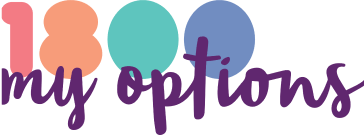Know the facts. Sexist ads are bad for our health.
November 2020
Read the full article
Download: Women’s Health Victoria (2018), Advertising (in)equality: the impacts of sexist advertising on women’s health and wellbeingOur everyday lives are flooded with advertising, which consciously and unconsciously shapes our beliefs, values, attitudes and behaviours. The advertising industry is built on selling us stories about who we are as individuals, who we are in society and our role in the world.
Gender inequality results in significant differences for men and women in terms of their education, income, employment, caring responsibilities, social status and participation in public and private life. Gender inequality is also recognised as the key underlying cause of violence against women.
In 2018, Women’s Health Victoria undertook research examining the links between advertising and gender inequality and women’s health and wellbeing. The research showed that girls and women are still under-represented in advertising and depicted in stereotyped ways. It also showed that portrayals of girls and women have become more sexualised and objectifying over time.
“Inequalities based on gender are so interwoven into the fabric and traditions of our society that they often seem invisible.”
– Women’s Health Victoria (2018), Advertising (in)equality: the impacts of sexist advertising on women’s health and wellbeing
The research showed that advertising has a huge impact on our understanding of ourselves and the world:
- It shapes gender norms and expectations for children as young as two years of age
- For women, exposure to sexist advertising can lead to low self-esteem, body dissatisfaction and eating disorders, as well as reduced satisfaction with sex and relationships
- Sexist ads reinforce attitudes and behaviours that lead to violence against women
Sexist advertising is harmful to men and gender diverse people too. Gendered stereotypes limit our ideas about what it means to be a man, woman or non-binary or gender diverse person. And men are increasingly being sexualised in advertising too, though the health impacts are not as stark as they are for women.
“Regardless of whether women are depicted as sexually passive or sexually powerful in advertising imagery, women’s body satisfaction is negatively affected by sexualised portrayals.”
– Women’s Health Victoria (2018), Advertising (in)equality: the impacts of sexist advertising on women’s health and wellbeing
The research clearly shows that advertising shapes and reinforces gendered ideas about how women and men are valued in our society. This perpetuates entrenched gender inequalities in our society and is linked to attitudes and behaviours that drive violence against women.
But the research also shows that advertisers who buck the trend can reap significant rewards. Ads that challenge gender stereotypes are positively received, particularly by women.
So what are you waiting for? Pledge to be the change in your industry.









